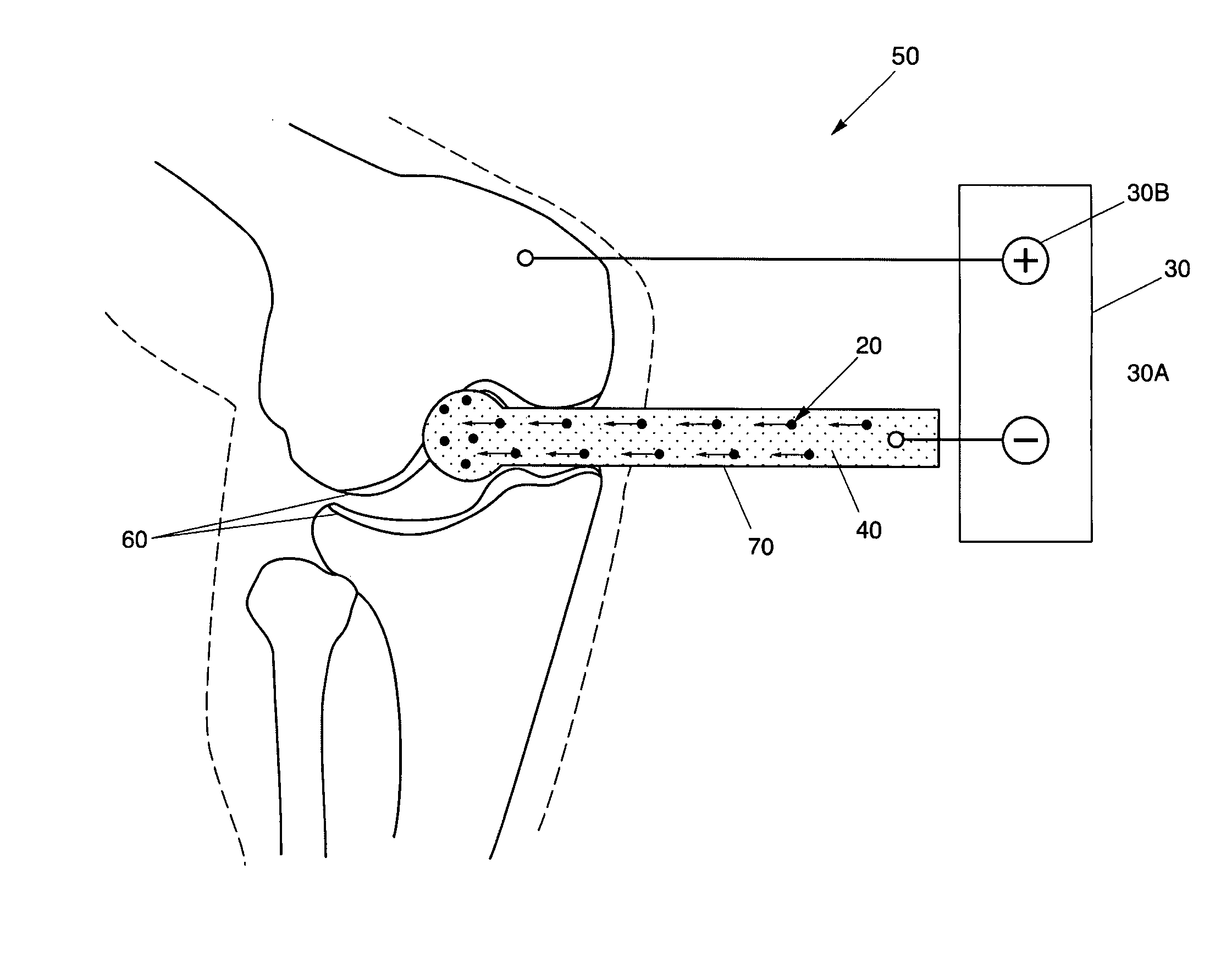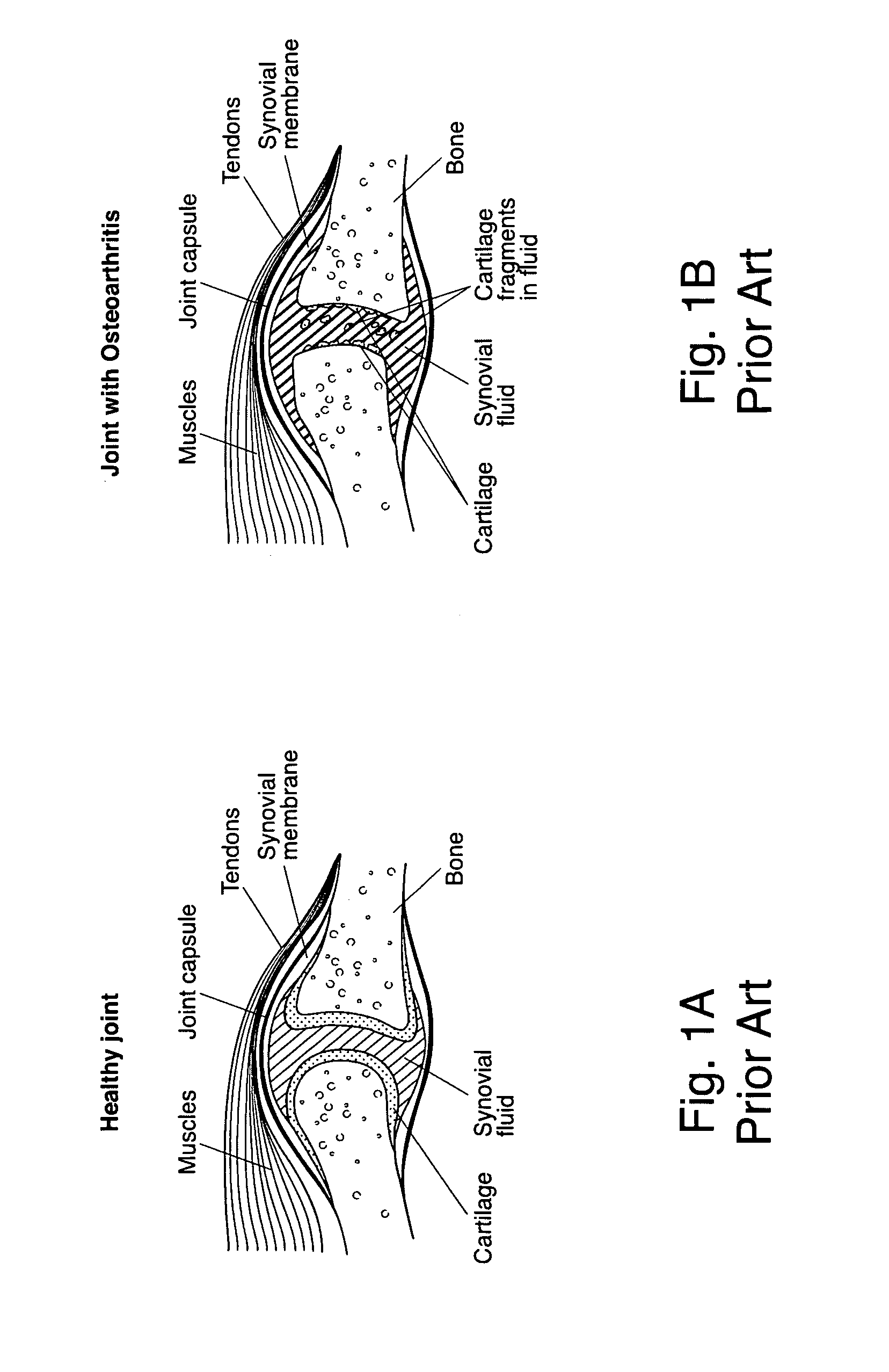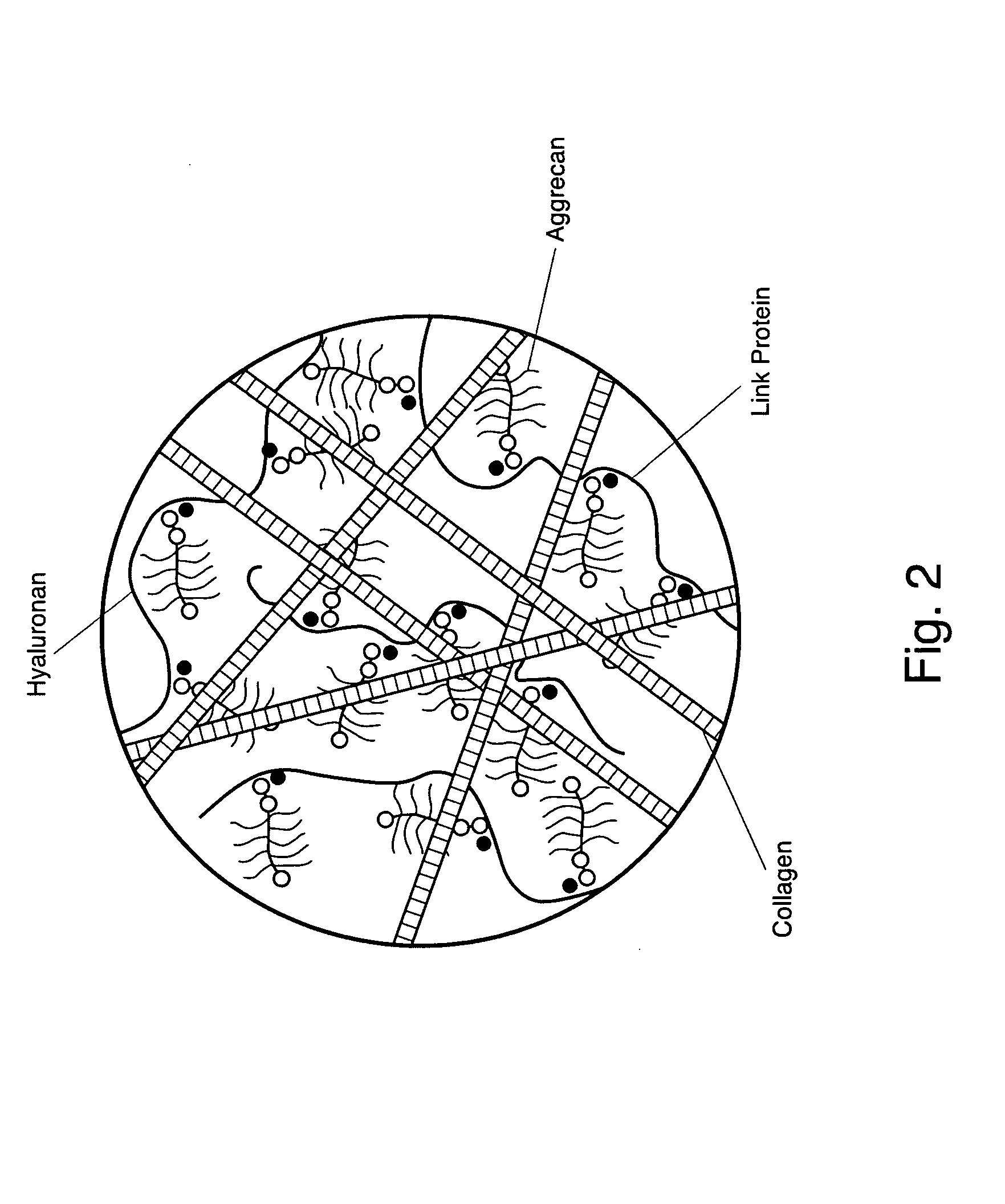Method for treating cartilage defects
a cartilage defect and treatment method technology, applied in the field of cartilage defects, can solve the problems of chronic pain and disability, pain, swelling, and loss of joint motion, and the damage of articular cartilage does not heal, so as to maintain normal body weight, improve joint function, and minimize adverse side effects and surgery
- Summary
- Abstract
- Description
- Claims
- Application Information
AI Technical Summary
Benefits of technology
Problems solved by technology
Method used
Image
Examples
Embodiment Construction
[0032]Generally, the present invention solves the problems in methods for treating cartilage defects by providing a new and unique method for treating cartilage defects 10. More specifically, the present invention relates to a method for treating cartilage defects 10, by moving proteoglycans, or other ions, into the collagen matrix of the defective cartilage using electricity.
[0033]By way of background, FIG. 2 illustrates healthy cartilage tissue having collagen matrix, proteoglycans, and water. The proteoglycans, mainly aggrecan, provide load-bearing for cartilage through osmotic swelling pressure. The collagen matrix provides tensile properties of the cartilage tissue. It is the interaction of all three phases of the cartilage—collagen matrix, proteoglycans, and water—which provides the stiffness of a cartilage.
[0034]FIG. 3 illustrates defective cartilage tissue missing proteoglycans. In defective cartilage tissue, the aggrecan leaves the collagen matrix to increase hydraulic perm...
PUM
 Login to View More
Login to View More Abstract
Description
Claims
Application Information
 Login to View More
Login to View More - R&D
- Intellectual Property
- Life Sciences
- Materials
- Tech Scout
- Unparalleled Data Quality
- Higher Quality Content
- 60% Fewer Hallucinations
Browse by: Latest US Patents, China's latest patents, Technical Efficacy Thesaurus, Application Domain, Technology Topic, Popular Technical Reports.
© 2025 PatSnap. All rights reserved.Legal|Privacy policy|Modern Slavery Act Transparency Statement|Sitemap|About US| Contact US: help@patsnap.com



